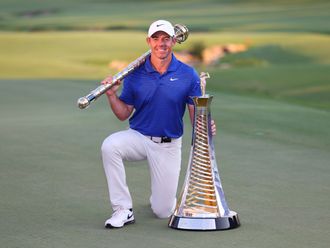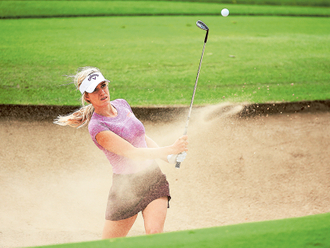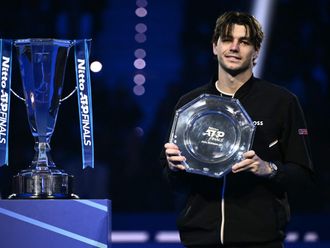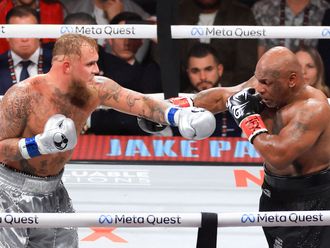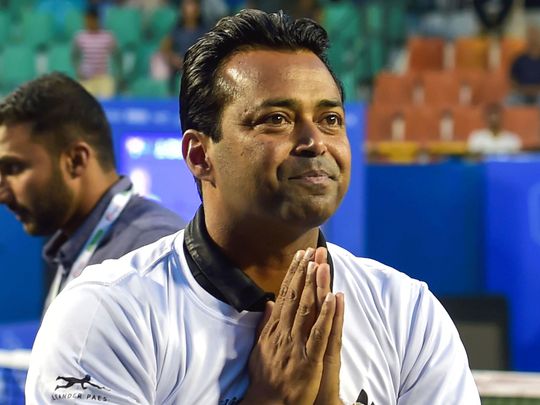
Dubai: When Leander Paes made his debut as a callow 17-year-old in the Davis Cup in 1990 – the world was a different place. The Berlin Wall had been brought down only the year before, India were yet to undertake the journey in economic reforms under a certain Dr Manmohan Singh while mobile phones were unheard of in this part of the world.
Put yourself in a time machine three decades forward and you still see Paes stomping around the court – one more time for his farewell season which the star himself has named #Onelastroar. He is now a 46-year-old well-groomed man, a hint of a pot belly perhaps the only concession to age, but still ploughing on with the same amount of earnestness – after 18 Grand Slam doubles titles, a record number of Davis Cup wins and representing the country in seven Olympics (yes, that’s right). He is also India’s only Olympic medallist in tennis.
Now, how is that for longevity?
If you are looking at our all-time great singles players, Ramanathan Krishnan would come first, followed by Vijay Amritraj and then Leander
‘’It’s a bittersweet experience to eventually call it a day. However, I will be very much associated with the game,’’ Leander said during a chat on the phone with Gulf News. “It will be a payback time for me now as my aim is to make India a healthy nation and help build future champions,’’ he said.
As Paes began the last leg of his glorious, eventful – albeit often controversial – part of his career, the inevitable question that may concern the tennis fan is that is he India’s best-ever tennis player?
Zeeshan Ali, the current Indian Davis Cup coach and who was Leander’s senior partner when he made his Davis Cup debut, was quite objective in his assessment. ‘’If you are looking at our all-time great singles players, Ramanathan Krishnan would come first, followed by Vijay Amritraj and then Leander,” he said. “However, if you are looking at the greatest Davis Cup and doubles player, then my answer is Leander without a doubt.”
The last roar has not begun on a particularly promising note so far – but for Leander, it’s more about an opportunity to say thank you to his fans than anything chasing personal glory. He and Jelena Ostapenko, who were wild card entries in mixed doubles of Australian Open, bowed out in the second round. But Melbourne Park holds a lot of pleasant memories for him anyway. “There is nothing left for me to achieve. I made my Grand Slam debut as a junior in Australian Open in 1989. So in effect, I was fortunate to be playing there across five decades — the 1980s, 1990s, the new millennium, 2010 decade and now 2020,” said Leander.
Early years
It’s not without reason that Leander had been attributing his fitness and athleticism to the excellent genes that he had received from his parents – Dr Vece Paes and Jennifer Paes. Vece was a midfielder in the bronze-medal winning Indian hockey team at the 1972 Munich Olympics while mother captained the Indian basketball team in 1980 Asian Basketball Championship.
Born on June 17, 1973 in Kolkata, Leander started his schooling at La Martiniere Calcutta as he picked up a racket first at South Club – less than few kilometres from his home at 31 Beckbagan Row.
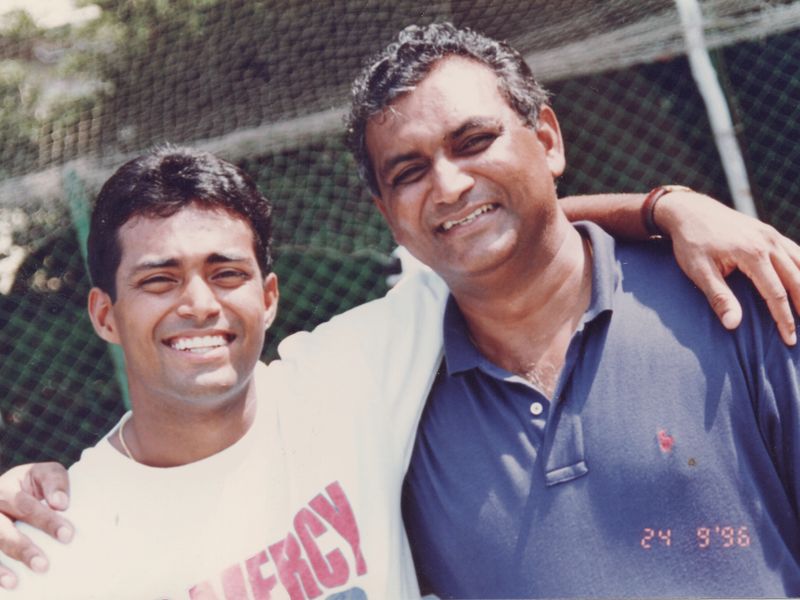
“Leander was a precocious athlete,” recalled his father Vece - a friend, philosopher and guide to the player - in an interview with Gulf News. “By the age of four, he could swim and cycle and at the age of five, he had developed his skills in soccer and tennis besides cricket, hockey and rugby. He was crazy about sport and even slept with his football boots and tennis rackets on his pillow. Soccer was his first love. Unfortunately, he had convulsions at the age of nine and had to give up contact sports.”
Under the watchful eyes of the Ali brothers, Akhtar and Anwar, a young Paes began his hitting at South Club and advisory sessions with former Premjit Lal, another Indian tennis legend from Kolkata. In 1985 at the age of 12, Leander was selected for the Britannia Amritraj Tennis Academy (BAT) in Chennai. It was an emotional choice for Leander to leave the family to join BAT – but their programme was the best available in the country.
Defining year
Success in the domestic tournaments followed and the conservative sports media in Chennai sat up to take notice of this lithe kid who used to represent the Madras Christian College. The defining year came in 1990 where Leander reached the finals of the Australian Open juniors, represented India in the Davis Cup against Japan and won Wimbledon juniors to end the year as the joint world No. 1 junior.
Tryst with Olympics
When Leander took part in his first Olympics at Barcelona in 1992 as a 19-year-old and lost in doubles quarter finals with Ramesh Krishnan – there was no way one would dream that he could be looking at a potential eighth Olympics appearance at Tokyo one day.
Olympic records reveal that there have been only a handful of athletes who have participated in more Games than Leander, such as Canada’s Ian Miller (equestrian, 10 Olympic Games), Austria’s sailor Hubert Raudaschl and Latvian shooter Afanasijs Kuzmins (representing Soviet Union until 1988) who took part in nine Games each. Giving the trio their due, it must be however said Leander is in a different league as he participated in a physical sport for 10 months in a year.
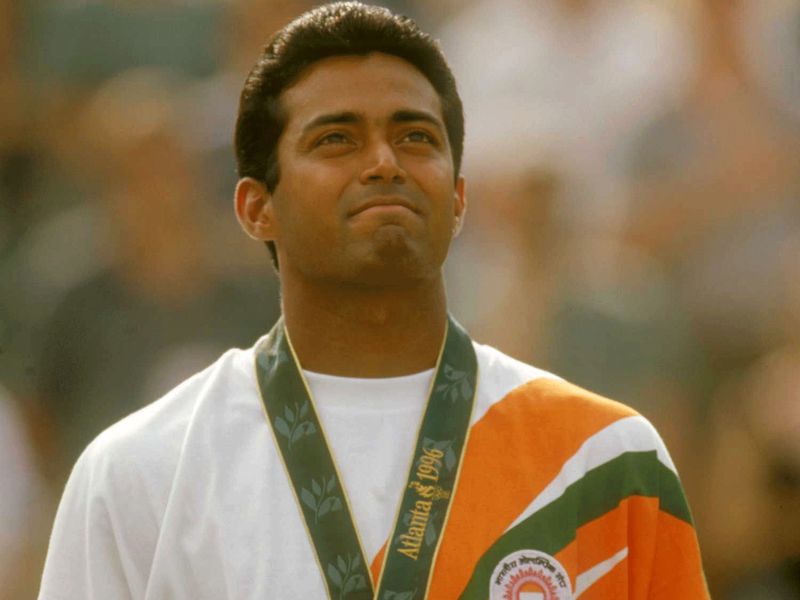
The sight of an overwhelmed Leander on the podium after winning the Olympics bronze in Atlanta in 1996 – the first Indian to win an individual Olympic medal since wrestler K.D. Jadav won a bronze in
1952 – pitched him to the status of a national hero. The sheer passion of seeing the tricolour flutter has seen Leander relentlessly pursuing the national duty across the decades – be it Olympics, Asian Games or the Davis Cup.
‘’Having been a part of his journey over the last 31 years, I am amazed at the intensity he still brings in playing for the country. He has always been available to play for India, while stars like him have often dropped out of team events like Davis Cup to prioritise on the Tour,’’ Zeeshan Ali noted.
A Davis Cup legend
It’s a no-brainer that for all of Leander’s doubles exploits in the Grand Slams or an enduring journey through the history of Olympics, it’s the Davis Cup stage where he has walked the tallest. He was hugely instrumental in taking India to the semi-finals in 1993 with huge upsets against Switzerland and France, eventually losing to Australia in the final.

A look at some of his scalps in this team event will tell its own story as to how Leander often punched above his weight to puncture bigger reputations: French duo of Arnaud Boetsch and Henri Leconte (1993), South Africa’s Wayne Fereira (’94),Croatia’s Goran Ivanisevic (’95), Dutchman Jan Siemerink (’95) and Jiri Novak (’97).
:Records are meant to be broken but due to the new format of the ATP Cup, Leander’s Cup record will stay for ever. In 126 Davis Cup matches from 56 ties, he has 91 singles wins and 35 losses and has a world record of 44 victories in doubles,’’ pointed out Paes Snr.
The doubles run
The bronze at Atlanta Olympics was a pointer that Leander had it in him to be a strong singles player – though his lack of height and the absence of a sizzling first serve meant he had to work extra hard with his return and groundstrokes. His biggest singles win on Tour came in
1998 when he surprised the legendary Pete Sampras 6-3, 6-4 in New Haven at their only meeting.
However with the new millennium, Leander made a conscious switch for more doubles play on the Tour and singles at the team events – and the results started showing. His association with friend Mahesh Bhupathi, which the tennis media referred to as ‘Indian Express’, proved an unstoppable one as they climbed to world No. 1 in the ranking after being the first Indian pair to win a doubles slam with both Wimbledon and French Open in 1999.
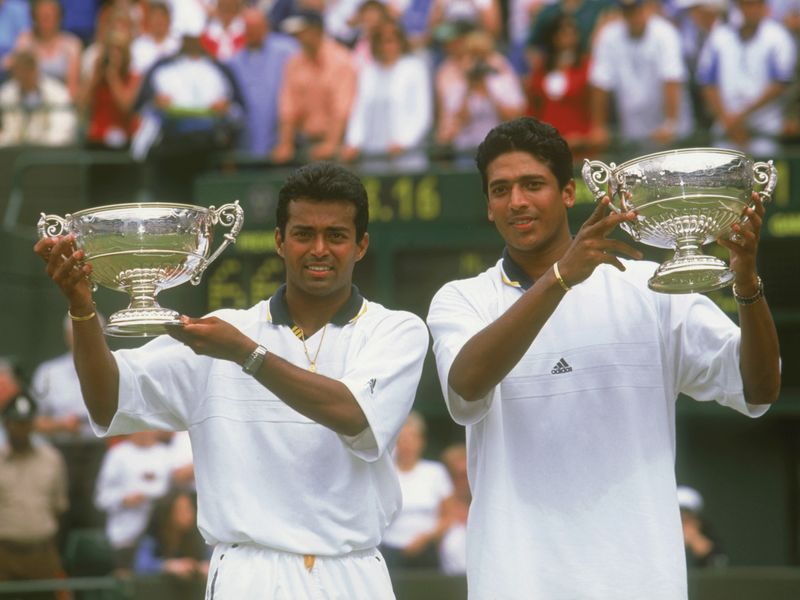
The unfortunate split between the combination soon after – for reasons
best known to them - meant Leander and Bhupathi were left to compete
with separate partners in the subsequent decades. Leander, meanwhile, struck gold in mixed doubles too with a serious of illustrious partners such as Martina Navratilova, Cara Black and the former world
No. 1 Martina Hingis. His haul of 18 Grand Slam titles (eight in men’s doubles and 10 in mixed doubles) came across a span of 17 years – the first one coming with Bhupathi in 1999 and the last one with Hingis in
2016 when the French Open title helped him complete a career Grand Slam in mixed doubles.
The Bhupathi split
It’s been one of the worst-kept secrets of Indian tennis when Leander and Bhupathi fell out – and the embarrassing part of it was that both did a very bad job of masking it in public. The body language of the duo gave it away even when they were jointly hosting a press conference and it’s also no secret that it had split the Indian tennis family into two camps – depending on which side you were on.
The rumblings had continued for years after they first drifted apart in 2000 and even when they came together for a brief while, the spark was missing. The respective fathers, Dr Paes and C.G. Krishna Bhupathi, also got caught in the crossfire.
Could the history of Indian tennis been written differently without their rift over the last two decades? Paes Snr was candid about that: “Leander and Mahesh were the best of friends and outstanding doubles players - together and separately. They use to live in each others’ pockets. Over time, their friendship got jaded by over proximity and personal ambitions and mistrust took over their mind sets.
The best reference for Leander and Mahesh should have been the Woodies (doubles pairing of Australians Todd Woodbridge and Mark Woodforde). The two of them were not the best of friends and hardly communicated off the field but they were world champions for years
“The best reference for Leander and Mahesh should have been the Woodies (doubles pairing of Australians Todd Woodbridge and Mark Woodforde). The two of them were not the best of friends and hardly communicated off the field but they were world champions for years.
The defining year for their partnership was when they reached the finals of the four grand slams in 1999 - winning two of them and also qualifying for world team championships. The following year they broke apart although they rejoined briefly later, the trust and friendship was gone. The ‘Indian Express’ started a lot of excitement in India and on Tour and there were opinions that they could have been the best ever. It is unfortunate, but then que sera que sera…’’
Troubled personal life
The personal life of Leander saw a lot of airing of dirty linen in public when, in 2014, model Rhea Pillai with whom the player was in a live-in relationship since 2005 filed a case at a Mumbai Metropolitan Court against the player and his father under the Protection of Women from Domestic Violence Act. Pillai, who is nine years older than Leander, alleged that the player didn’t want to give her the ‘dignity of a wife’ while they prevented her from entering their flat in Bandra to collect her belongings after their estrangement.
Things got nasty but Leander sought solace in the company of her daughter Aiyana – now 13 – who was born out of their nine-year relationship.
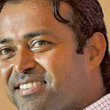
The #Onelastroar that I am doing is a tribute to my fans – though I must say that a new chapter is beginning
“My commitment towards her is increasing and she needs more time from me. The #Onelastroar that I am doing is a tribute to my fans – though I must say that a new chapter is beginning,” Leander said during the conversation.
What next?
For someone as passionate about his profession and involved with it for three decades (the only Indian sportsperson who came anywhere near his longevity was Sachin Tendulkar with 24 years in international cricket), it won’t be certainly easy to live without the game.
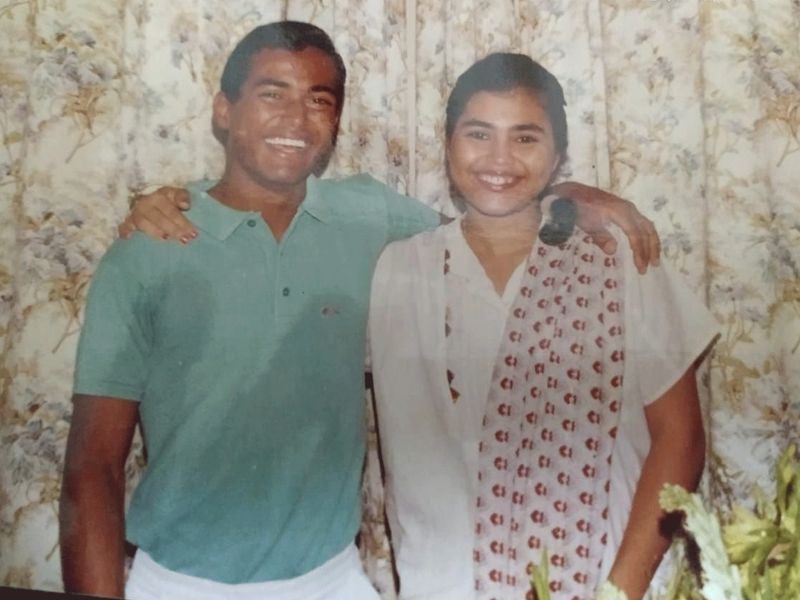
“It’s been an extremely emotional moment for the family as we have been very much a part of his journey for 30 years. In fact, I had a lump in my throat when before leaving for the Tour, he told me that tennis is the only thing that I have and know,’’ recalled Jacqueline Paes, his elder sister who had been a pillar of strength during his formative years.
But then, he is not going anywhere from the sport. There is a Leander Paes Tennis Academy in the pipeline while his bigger goal is to build the next generation of athletes from the ‘’765 million kids’’ in the country – in his own words. There are several other assignments on the cards like that of being a commentator and motivational speaker.
There is never going to be a dull moment then for Leander Paes – even if he is off the court.
Career highlights
* Won the junior Wimbledon and junior US Open before turning professional in 1991
* Defeated Fernando Meligeni to win the bronze medal at the 1996 Atlanta Olympics
* Awarded the Rajiv Gandhi Khel Ratna, the highest sporting honour given by the Indian government, in 1996
* He has won 18 Grand Slam titles in all, eight in men’s doubles and the remaining 10 in mixed doubles. His last Grand Slam title was the mixed doubles crown, alongside Martina Hingis, in the 2016 French Open
* In 1999, he reached the final of all four Grand Slams alongside Mahesh Bhupathi. They won the French Open and Wimbledon that year and reached the world No. 1 doubles ranking.



